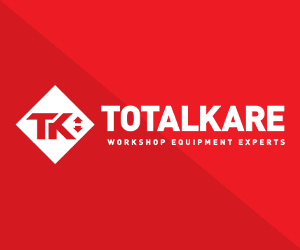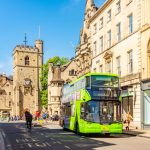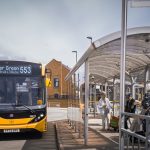If you visited Coach & Bus UK in October 2019, and spoke to any technology supplier, the chances are you heard the term Internet of Things (IoT).
It sounds rather woolly, although it’s so all-encompassing that it’s harder to think of a better name for it. It’s been talked about a lot in recent years by suppliers and manufacturers. But what do operators make of it? And how can it be effectively used in a coach business?
What is the Internet of Things?
We asked coach operators to define it for us.
Richard Grey, MD of Grey’s of Ely, tells routeone: “As an operator, we would view IoT as the ability for one or more technological things (trackers, tachograph analysis, fuel dispensing, vehicle scheduling systems) to communicate data between them, either in a one-way or two-way process and/or into a singular hub.
“That in turn will provide useful information or KPIs to either be used in your business, or to be provided to third parties such as customers and clients.”
Richard Bamber of Anthony’s Travel adds his view of IoT. It is “devices connected via the internet to automatically generate data or reports without any human input.
“Ultimately, it’s connectivity and our increasing reliability on it to get data and monitor efficiency, performance, trends, etc, with minimal human intervention.”
Mark Drury, MD of Passenger Plus, says: “My understanding of the Internet of Things is that it uses connected technology to improve things or make them easier.
“I love smart technology. I have as much of my house connected to Alexa as possible. But my favourite example is my Hive heating. It knows when I cross a geofence two miles from home and sends me a message asking if I want to turn the heating up. A simple bit of technology that makes a real difference.”
Matt Barnes of Barnes Coaches adds: “With absolutely no help from Wikipedia, I would describe it as pulling together information and using it to help you. Hopefully autonomously.”
Simple.
Data analysis allows smarter working

We also asked Jonathan Bates, Marketing Director for MiX Telematics.
He told us: “IoT refers to all manner of consumer and industrial products, including passenger carrying vehicles and their onboard and back office traffic systems, which combine using internet connectivity.
“The Internet of Things enables powerful data analysis.
“That helps us to work more smartly by delivering benefits such as greater productivity and enhanced safety and efficiency in operation.”
Mike Whitehead, MD of Distinctive Systems, adds: “Onboard devices are frequently connected into the vehicle’s CAN bus. They record data about harsh driving, idling time and so forth. That is very valuable for operators.
“CAN bus is also of huge potential benefit to operators with its ability to send automated warnings about component failures.”
How can we use the Internet of Things to our benefit?
Almost all coach operators will use IoT in some way or another by now.
Ross Prentice, of Prentice Coaches of Haddington, says: “My first thought was that we don’t really make use of IoT. But after a little pondering, our CCTV system qualifies. So does our tracking and ticket machines, which report to a portal.”
Andy Wing at Golden Boy Coaches says: “Google Maps is one of the ways we use IoT, for navigation and traffic updates.
“All the data is collected from mobile devices that are running the app or have location services turned on. We also use telematics for gathering vehicle and tachograph data.”
Philip Hitchen, MD of Belle Vue Manchester, says: “We have used IoT in many ways. Turning direct mail into email communications. Apps for driver walk-round checks. Live vehicle tracking. In transit video for onboard driver presentations. And turning aftersales forms into digital forms and online reviews.”
Richard Grey gives a nice example of how IoT can be used. “Tracking coupled with ticketing, coupled with bus and train times, packaged together into a simple user app that helps clients use one bespoke travel solution to get from a business park to their home.”
IoT drives targeted marketing

Richard Bamber has a different example.
Analytics, and how the drive targeted marketing. “Simple things like age, health conditions, social media likes, pages followed, political views and country of origin all drive the marketing you see,” he says.
“For me, such targeted data can effectively ensure that we are not wasting funds advertising to people who will not be interested.”
Matt Barnes agrees. He says: “We use Facebook to target our advertising. A recent successful example was pushing the new Primark in Birmingham. It picked up a whole new market of coach travellers for us. Hopefully they will return.”
He adds: “On the fleet side, we use a number of things such as CCTV, dash-forward and driver-facing cameras, and Webfleet for location plus how the vehicle is being driven.
“As always, a huge amount of data is produced. The key is in knowing how to use this information to actually make a difference and improve how we operate.”
What are the pitfalls?
Richard Grey says the “nirvana” of a fully-connected operation can be difficult to achieve. That’s “because it requires the individual technological ‘thing’ to easily provide the information out, and hopefully that is done in an automated way.”
Mark Drury adds: “I find it frustrating that there is a silo approach to information sharing. For example, we have separate systems that tell us the what, when and where of a certain job, who the vehicle is being driven by, when they did their walk-round check.
“We can live view the CCTV, we electronically send work tickets and have the drivers accept them. Our management team can view and amend our schedule and bookings from their phones or tablets.
“Pretty much all of these systems operate on separate platforms and are unable to communicate with each other. The tracking knows how long it will take the vehicle to get to the pick-up point. Coach Manager knows what time the pick-up is, but they cannot talk to each other to warn if a vehicle is delayed.
“I would like to see a system that once a vehicle is allocated, can work out from tracking the best route to take, communicate that to the driver and let the client know that their vehicle is on the way.
“Should traffic cause an issue, the system would send a CCTV clip to the traffic office and a push notification to the passengers.”
But not all is simple to achieve…

Kathryn Pulham of Pulham’s Coaches says: “Getting software suppliers to provide APIs between each other is often very challenging.
“We are doing some work with one of the main manufacturers currently on linked data.
“That will enable data to be downloaded and cross checked, which will in turn improve monitoring and compliance. That will hopefully make our jobs much easier and less paper based.
“We are almost paper-free in our coach and bus operations now. There is still much to be done, though.”
Gareth Davies, Director of Lakeside Coaches in Ellesmere, sees a problem with multiple sets of data.
“A vehicle odometer reading, for instance – we have this as a value recorded on our walk-round check app, our fuel dispensing system, our workshop app system, our tracking system and tachograph download data. Are they all in agreement, and does it matter if they are not?
“For me, the key bit is about how we process it and why. The question should be why are we collecting this data? Which bits are relevant? How is it going to influence our decision making?
“Who is acting on this information? Is the data duplicated, could it be collected more cheaply, or to make it more powerful does it need to be combined with another data source?”
What does the Internet of Things have in store for the future?
Philip Hitchen paints a view of a future driven by IoT. “In the future, vehicles on regular contracted runs with the same schedule may be automated, where the driver disappears from the steering wheel.

“Using paper altogether will be eliminated. We’re not far off that now.
“80% of customer enquiry communications will be automated. An enquiry, booking and follow-up will all be automated in minutes, not days.
“Operators that embrace this will be slick, have lower overheads and more efficient lines of handling large volumes of work in peak season to embrace increased bottom line figures.”
Mark Drury adds: “I am certain that in the next few years, the level of integration between the systems will improve. I believe that the increase in popularity of electric buses and coaches will be the driving factor in pushing IoT.
“Anyone that has ever driven a Tesla will appreciate how the connectivity and monitoring of electric vehicles is light years ahead of their fossil-fuelled counterparts. I can see that being a catalyst for increased integration.
“The introduction of superfast 5G may also accelerate some of these systems. But then, who knows. In 10 years we might have driverless vehicles.”

























